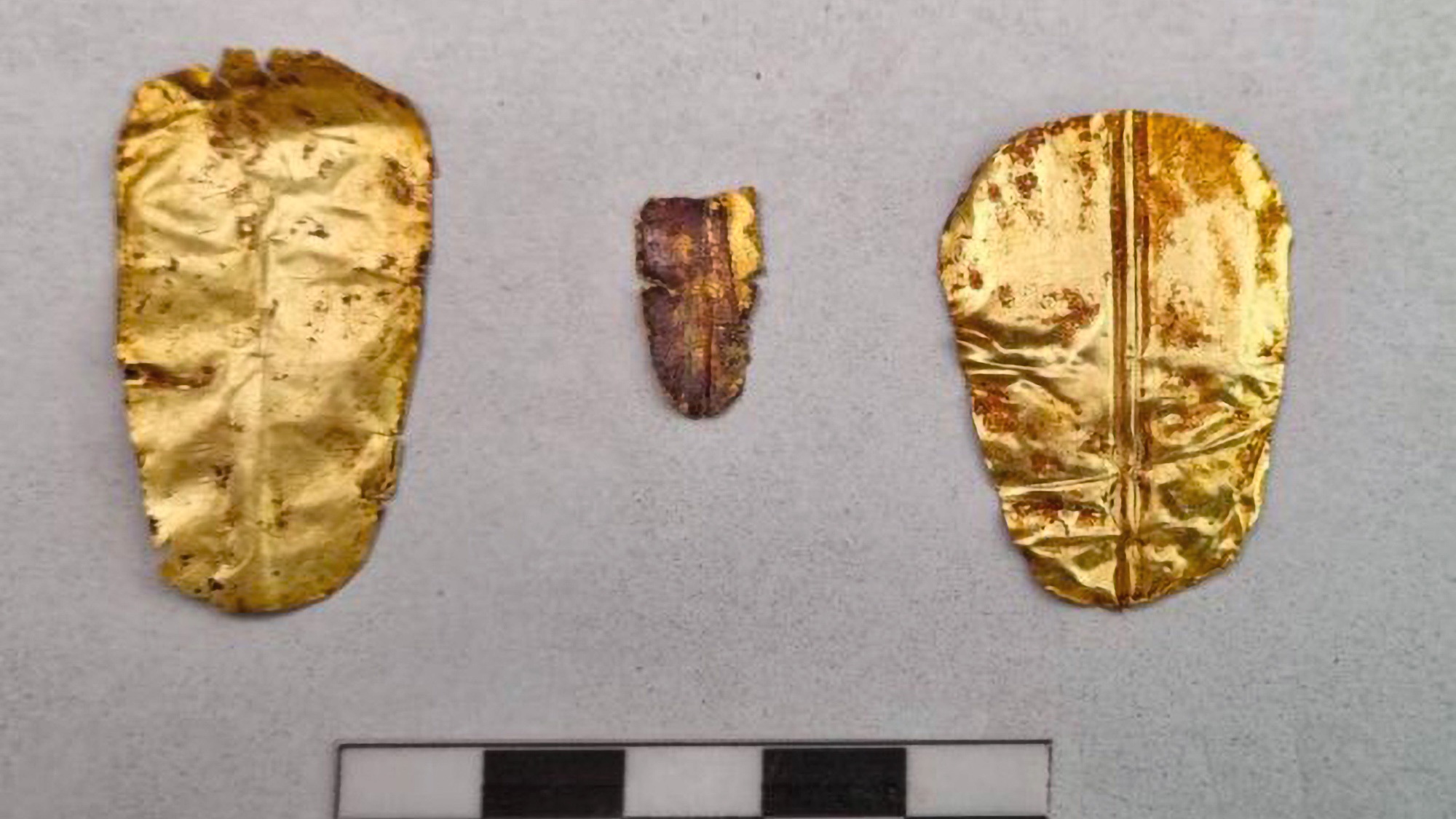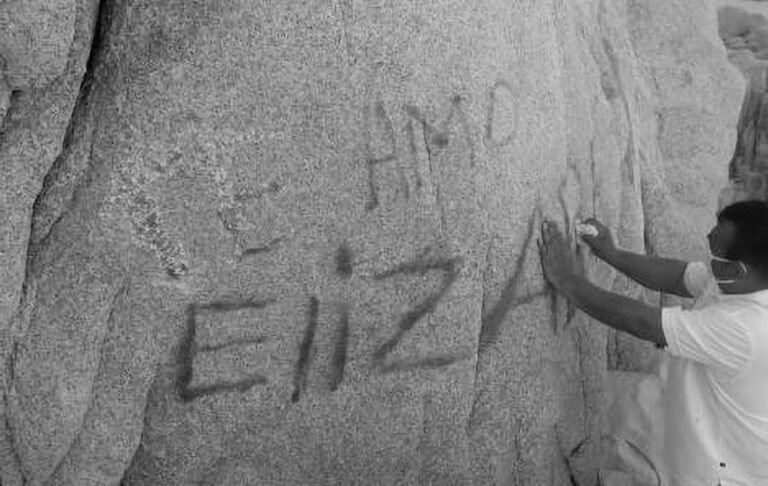Three ancient Egyptian golden tongues used by the dead to talk to Osiris on their way to the afterlife have been found in tombs believed to be 2,500 years old.
The Spanish archaeological mission uncovered sarcophagi, three golden tongues hundreds of funerary figurines in the famous El Bahnasa archaeological area, some 220 kilometres (136 miles) south of the Egyptian capital Cairo.
Egypt’s Ministry of Tourism and Antiquities said that the three gold tongues are foil amulets in the shape of tongues that were inside the mouths of human remains.

Three golden tongue-shaped amulets found in a human remains from Roman period.
(Ministry of Tourism and Antiquities/Newsflash)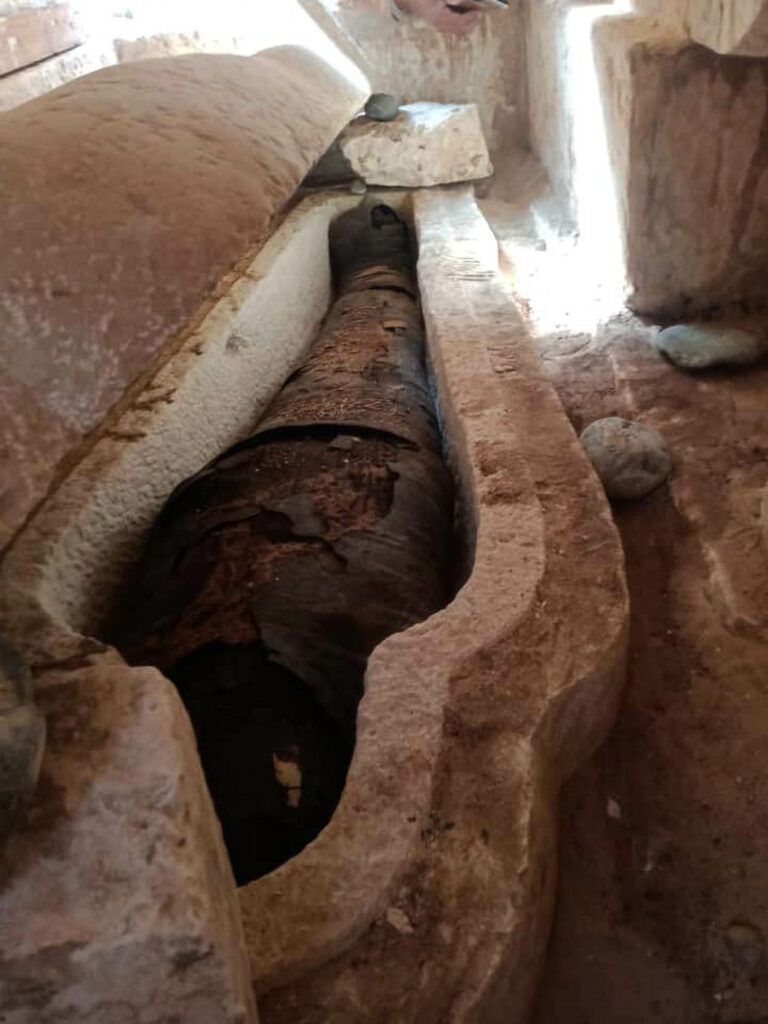
Two 2,500-year-old tombs of man and woman found in Egypt.
(Ministry of Tourism and Antiquities/Newsflash)
One of the tombs, which dates back to the Saite dynasty, which is a late period of ancient Egypt that ended in 525 BC, was completely sealed when it was discovered meaning the contents were most probably undisturbed over the years.
Esther Pons Melado, a co-director of the archaeological team, said: “This is very important, because it’s rare to find a tomb that is totally sealed.”
The archaeological mission was set up by the University of Barcelona in 1992 and now they have uncovered a limestone male sarcophagus with a well-preserved mummy, four jars, amulets, including some depicting a scarab, and about 400 funerary figurines made of faience, which is an ancient type of glazed pottery.
A second tomb had already been opened and the remains were not in a good state, according to Melado. Mustafa Waziri, Secretary-General of the Supreme Council of Antiquities, is quoted in a statement from the Ministry of Tourism and Antiquities as saying that the second tomb had been opened at some point in antiquity.
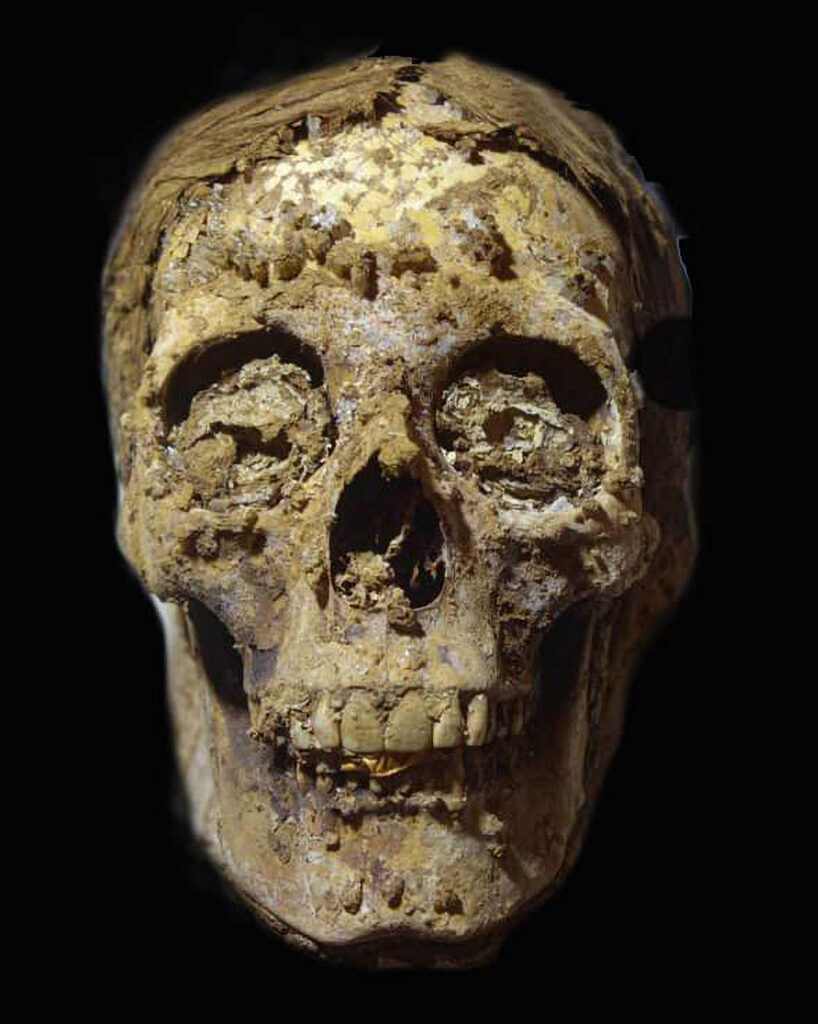
Golden tongue-shaped amulets found in a human remains from Roman period.
(Ministry of Tourism and Antiquities/Newsflash)
Canopic utensils found in the tombs in Egypt.
(Ministry of Tourism and Antiquities/Newsflash)
But the three golden tongues include one belonging to a 3-year-old child and two from the mouths of adults. They date back to around 30 BC, which corresponds with the beginning of the Roman period of Ancient Egypt.
The tongues were meant to help the deceased converse with Osiris, the ancient Egyptian god of the dead, on their way to the afterlife, according to the Egyptian Tourism and Antiquities Ministry.
Hassan Amer, a professor at the Department of Greco-Roman Archaeology at the Faculty of Archaeology at Cairo University, who was also the director of excavations on the mission, said they had found a limestone coffin in one of the tombs that contained a human face in a good state of preservation.
Jamal al-Samastawi, Director General of Central Egypt Antiquities, said that the Spanish mission had been working in the Bahnasa archaeological area for nearly thirty years, during which it had found many tombs.
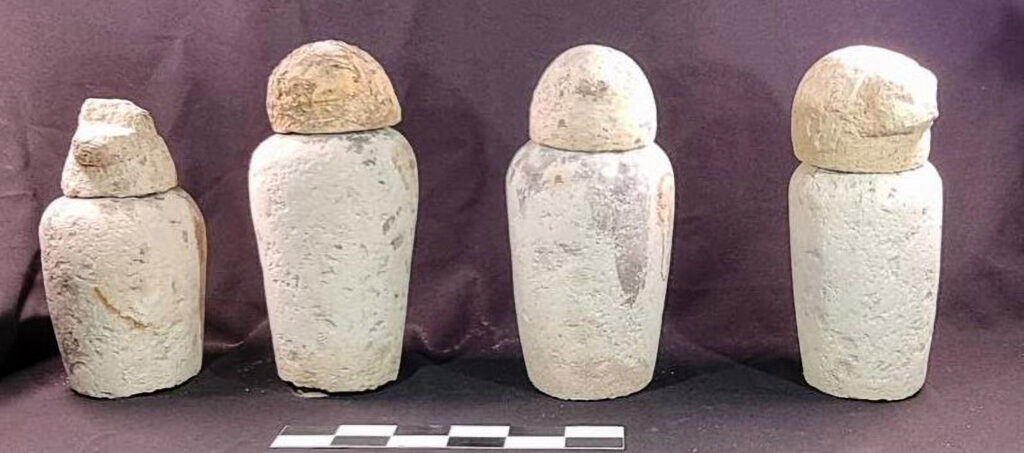
Four canopic jars found in the man tomb.
(Ministry of Tourism and Antiquities/Newsflash)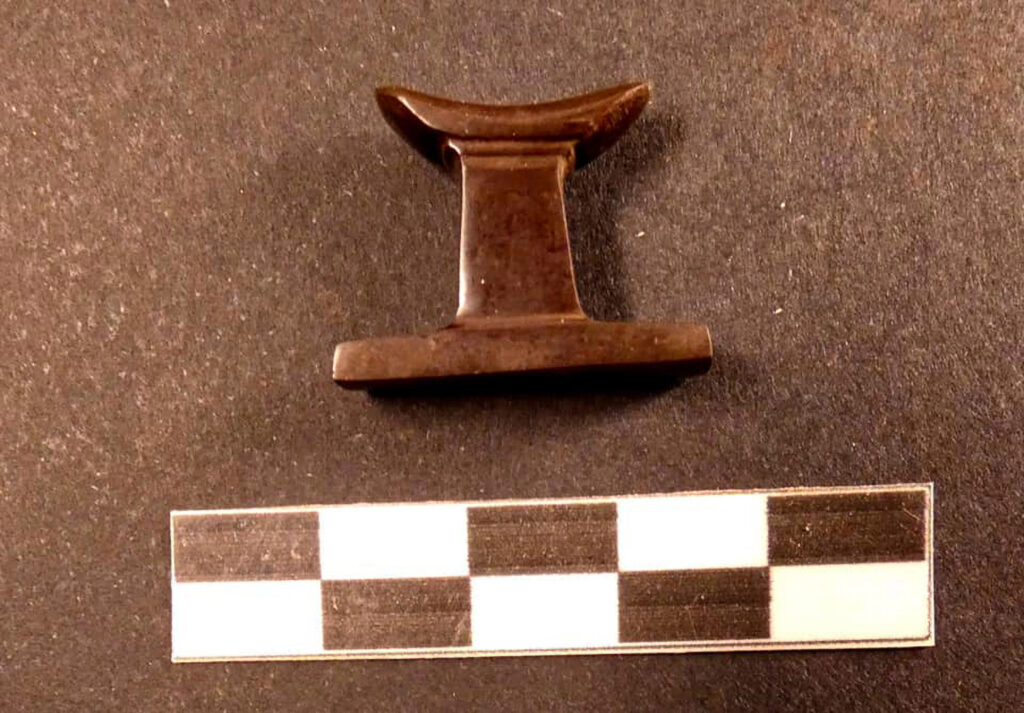
One of the items found in the tombs in Egypt.
(Ministry of Tourism and Antiquities/Newsflash)
To find out more about the author, editor or agency that supplied this story – please click below.
Story By: Joseph Golder, Sub-Editor: James King, Agency: Newsflash
The Ananova page is created by and dedicated to professional, independent freelance journalists. It is a place for us to showcase our work. When our news is sold to our media partners, we will include the link here.

